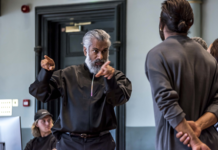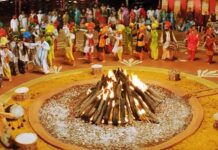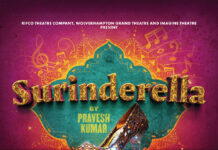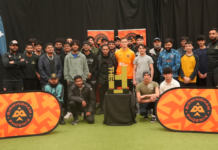Director talks about her latest film ‘It’s A Wonderful Afterlife’
GURINDER Chadha is back to her best this month in the supernatural comedy ‘It’s a Wonderful Afterlife’. We’ve all heard the hype, but what does the woman behind the camera have to say about her latest film…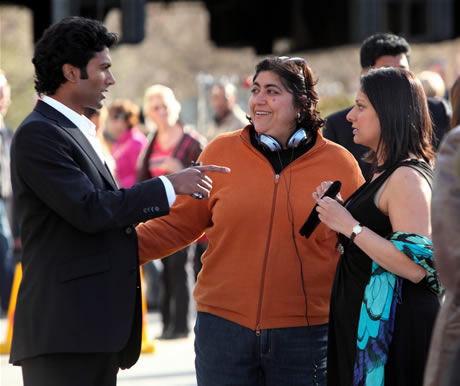

Give me a quick insight into the story…
This is an Ealing comedy about an Indian mum who lives in Ealing with her daughter, who’s a little bit overweight, not exactly beautiful and who has a broken engagement behind her. And people in the community have been really mean about this girl and the mother has had enough. So she devises all kinds of ways of killing people, using Indian cooking methods. But the people she kills come back as spirits and she has to deal with that. More than that – we’re Indian so we believe in reincarnation and the spirits can’t work out why they’ve not been reincarnated. There is some sort of energy. I like the ghost story side of it. I referred to them as ghosts throughout production.
So the ghosts need to learn a lesson before they can be reincarnated?
They learn that in order to be reincarnated they have to do a good deed. And that good deed is getting the fat girl married off, because they’ve been mean to this girl. The bulk of the film’s about retribution and also about how you live your life, in the face of death. Much like It’s A Wonderful Life. It’s about reappraising how you lived your life, and how to be good people.
You’re clearly a big fan of the Frank Capra movie, right?
It’s got to be in my Top Three films of all time, although here the inspiration for the movie came first. I was watching one of these Top 100 family films around 2005-2006 and they showed the clip of the Indian wedding scene and the party from Bend it like Beckham, which was inter-cut with the football, and we had so much fun shooting that scene that I thought ‘How can I do another scene without seeming like I’m repeating myself?’ Yet weddings are so much part of our culture, so I wanted to do another one but to do it slightly differently. So I thought maybe I could do that kind of scene with a horror spin, where everything goes tits up! Much like the scene in Carrie at the end. So from there I started seeing this crazy film, set in Ealing, but in the world of Bend it like Beckham and yet a completely different genre. We worked on the script, came up with the idea of the mum, the fat daughter and the spirits, but it didn’t really come alive until I came up with the idea of reincarnation, and having a second chance. The working title was My Bloody Wedding, and then one day when I was doing the washing up, it hit me: why don’t I call it It’s A Wonderful Afterlife? And once I’d crystallised that title, the film really started to take shape.
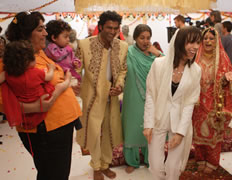 So it’s been percolating for a while?
So it’s been percolating for a while?
It takes us about two years to craft the script – you have to mull over the idea, see if it has legs, but the initial idea was always there. We’d talked about the comedy horror genre. And the other film we were referencing was John Landis’ An American Werewolf in London, because we always knew we’d have spirits around but we wanted them to be comedy spirits. And we wanted them to be like the ghosts in John’s film, that progressively get worse.
How much horror is in the film then?
That was an interesting discussion because in the script we had them decomposing and limbs falling off, eyeballs falling out, and things like that. But when we came to make the film I didn’t want it to just be bloody and gory – I needed it to be a bigger idea and that’s why the reincarnation and the need to do a good deed became such a breakthrough, to provide moral fibre for the film. That’s where Capra comes in. But in order to make it emotional, I had to go a bit different from John’s film, because while in that film the ghosts are saying, ‘C’mon you’ve got to kill yourself’, I had to find a way for the spirits to learn from their mistakes and become better people. So I had to make a decision not to really ‘goryfy’ them, because in cinema you have to really see people’s eyes, to relate them, for the emotional truth to come out. So if we made them too gory that might get in the way of the emotional theme of the movie. We went more down the Blithe Spirit route, which is another film I reference.
Do you think that there’s more pressure on a young woman to get married in an Indian-English family than, say, a white English family?
That’s not just an Indian thing. Just look at magazines and all these poor girls with eating disorders, to see how unacceptable someone who’s overweight really is. That’s all girls. It was therefore important to have a love story with a girl who doesn’t necessarily lose weight in the movie; she just gets healthier. At the end she’s not much slimmer, she just looks after herself, dresses better and is shining from the inside, because she’s more at ease with who’s she with. She still a large girl but is more confident.
Why did you cast Shabana? She’s a huge star in India, right?
She’s the ‘Meryl Streep of India’ and has played every role imaginable but she’s never played an English-Asian mother, a Punjabi mother, and she was really excited. She read the script and said, ‘I’m going to put on weight.’ She was shooting a film in Chandigah, the capital of the Punjab, and she ate herself silly. And blimey, I wasn’t expecting her to put on that much weight. She really wanted to get that three stomachs syndrome that a lot of older Indian women have. And she achieved that – she had a glorious triple stomach. She loved it, because she’s usually so glamorous. She’s in her 50s but eye-catching beautiful. I didn’t need to give her any padding!
How did she respond to a film that was such a departure for her?
She’s a consummate actress, so on the acting side she had no trouble at all, but I did have to guide her with the accent, to sound British-Indian, but she got that very quickly. I think the difficulty for her, and all of us, was the fact that only her character can see the ghosts. So we had to do the scenes without the ghosts and with ghosts, and when they weren’t there her eyes were darting all over the room! That was hard for her when other characters were in the room. It’s a credit to her though; because when we’re in the cutting room doing the edit, boy was she in control of her performance. She was making these jokes on set, but when you watch her she so knows what she’s doing. That’s where you see experience. And as soon as she got to London the first thing she wanted to do was to hang out with my mum and all my aunties. She came to a couple of parties, and she dressed, talked and acted like them. It was wonderful. And my family were soon in awe of her. In fact, it was a bit embarrassing, stopping them from asking for autographs and pictures!
Do you write and shoot for a specific audience or not?
It’s a combination. My audience is so diverse. There’s the British Asians here, Indians in India, Indian people all over the world, and then you’ve got ordinary people in Britain who want to see quirky British movies. You’ve got the same people all over the world. Then there’s women all over the world who love my movies because they have female protagonists and then it goes on and on. I’m all for different people taking different things from the movies, so they’re all quite layered. So, for example, an English guy watching the movie next to a British-Indian will have 75% the same experience, but the Indian will have 25% different. So, for example, when the spirits arrive in the kitchen for the first time, Shabana’s character is absolutely terrified and the first thing she grabs is a pressure cooker. Now, to most people, that’s just a heavy saucepan, but for an Indian it’s the funniest thing in the world because every Indian household has a pressure cooker, and we’ve all grown up with that blasted whistling sound when mum puts the dhal on! It’s a funny object for us. So that’s an in-joke for British Indians. And there are little aside in Punjabi, like Bend like Beckham, that Indians will get.
And with the comedy you’ve clearly gone for an Ealing tone, being an Ealing movie, set in Ealing!
There are some witty lines in the script. My favourite is a line that Paul [Mayeda Berges, co-writer] wrote, when Sally Hawkins’ character is going to get married to a guy she met in India, and the mother freaks out and says, ‘Roopi I begged you go to India with Linda, why didn’t you go?’ And Roopi says, ‘With all due respect, I’m not going to India to find a husband.’ And Curryman says, ‘That’s no loss for India.’ There are funny lines all the way through. Sally’s character is like Margaret Rutherford. If she were alive today and had gone to India and spent six weeks in an ashram, she’d come back to play Sally’s character. And in Blithe Spirit she was wonderful as the woman who could sense the spirits, and Linda can sense them in our movie.
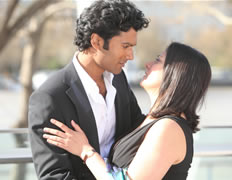 You’ve gone a relative unknown with Goldy Notay as the daughter…
You’ve gone a relative unknown with Goldy Notay as the daughter…
I’d seen her on stage, and on TV, and she’s very good at comedy and very empathetic, I think. She’s got a podgy face, but is svelte-like, so she really had to put on weight for me. I just thought she had the right face. Most actress are very chiselled and work very hard at staying slim, so with Roopi I had my eye on her from the beginning ever since I’d seen her in a theatre production five or six years ago. I sometimes see people and mull them over for a couple of years. She looked really pretty and svelte when I met her for the movie and I was really worried that it wouldn’t work! I couldn’t believe it was Roopi! So I had to ask her to look less presentable! So she put on weight, wore bad clothes, kept her hair unkempt and didn’t shave her top lip. Keeping the facial hair! Her husband loved it. He’s an Italian and a chef and for the first time in their married life she was eating all his pasta and food and not moaning. And of course she got an enormous bust, which he loved!
And the other main cast?
Mark Addy is superb as the copper who suspects Roopi‘s mum. Zoe Wannamaker plays the Jewish neighbour. I met her and really liked her, she’s sparky and spunky and she really got it. It’s not an easy script to read – you have to suspend disbelief and not worry about the murders and ghosts and how it will all work. You’ve got to have faith in me as a director when you read the script and Zoe really got it! She’s never really played Jewish before…
Why Jewish?
It’s quite Ealing, and funny! And then Sendhil Ramamurthy is very handsome and very believable as the rookie copper and he made the love story work so well, because he and Goldy really hit it off. On screen the love story really delivers. He’s also a great bit of eye candy! We have Sandeev as Curryman, and other actors who from Bend it and Bhaji on the Beach and one of my favourite actresses in Britain is Shaheen Khan who plays Kebab Woman, who was mum in Bend It like Beckham, and again she was devastated because I always make her out to be an old battleaxe! She carries the spirit world very well.
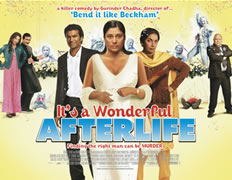 The choreography of the spirits must have been one of the major challenges?
The choreography of the spirits must have been one of the major challenges?
As a director, the choreography of five spirits in every scene, so for most of the movie I had a minimum of six characters in every scene, because wherever Mrs Sethi went, the spirits went, too, so yes it was very hard to choreograph that. That was hard work – always having six people in the frame because when you watch it back you think ‘Who should I be looking at?’ That took a lot of brainpower, to watch everyone all the time.
And the soundtrack? Music is always so integral to your films…
Music is so important in all my films, and we’ve got this fantastic score by Craig Pruess, my usual composer, where he’s gone totally Ealing, and very Ladykillers! A score and it’s quite scary in places. It’s quite complex, and in that there’s a very British-Asian contemporary soundtrack. And artists from Bhaji on Beach days, they’ve really developed and the tracks they’ve produced are outstanding. As a British Asian, that delights me: the British-Asian music scene has really revolutionised the music scene in India. They’re now huge artists in India, but they’re all people I’ve know for 15 years. It’s very up to the minute. But I’ve also got some lovely Western songs that audiences will recognise, and a very funny Bhangra re-working of Staying Alive!
‘It’s a Wonderful Afterlife’ is released in cinemas across the UK on the 21st April 2010.


